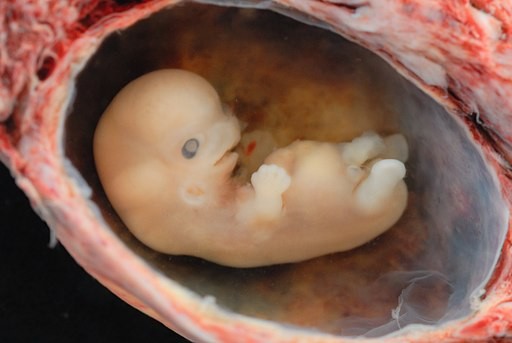Like animals that hatch from eggs, humans also have a yolk sac (YS) during the embryonic stage. This structure plays multiple roles for most vertebrates during the animal's development. On the other hand, its function in humans remains unclear since it does not contain yolk and disappears during the second trimester of pregnancy.

Single Pouch With Multiorgan Functions
There has been a scarcity of studies performed on human yolk sac. Researchers find it hard to acquire relevant tissue samples from donated embryos after abortions. To further explore the capabilities of these structures, researchers from Wellcome Sanger Institute experimented with the important role played by this pouch in human development.
Immunologist Sarah Teichmann and immunogenomicist Muzlifah Haniffa obtained human yolk sac samples from a UK biobank. These samples were taken from embryos that were 4 to 8 weeks old. Then the team profiled the gene activity in the tissues to identify the kind of cell present at this stage.
Their analysis reveals that just like in animals, the yolk sac serves as the site where a human embryo makes its first blood cells. The team reports that four weeks after conception, the pouch harbors blood-forming stem cells, macrophages, and other cells in the circulatory system. As human development progresses, this job is handed over to the forming liver and is passed down to the bone marrow.
The scientist discovered more possible functions. The kidneys of an adult human release erythropoietin, a hormone that stimulates the production of new red blood cells. It appears that the yolk sac is the source of the early embryo for this substance.
Aside from this, it was discovered that the yolk sac uses an unexpected shortcut in producing macrophages. While the immune cells mature, it undergoes an intermediate stage called monocyte, but yolk sac macrophages bypass this step. Replicating this process in the laboratory can make it easier for researchers to raise cultured macrophage cells. This can help them harness the cells to treat cancer and repair damaged tissues.
According to Haniffa, their study reveals a short-lived structure during the early stage of human development that is critical for the embryo. She describes the versatile yolk sac as like three organs in one since it performs jobs that will be later assigned to kidneys, liver, and bone marrow.
Human Embryonic Development
A successful pregnancy undergoes several stages. After the egg cell is fertilized by the sperm cell, a zygote is formed, which divides to develop a blastocyst. The blastocyst travels towards the uterus, which implants itself in the endometrium. During the final stage of the implantation process, the blastocyst placed into the inner lining of the uterus evolved into a structure known as an embryo.
At this point, internal organs and external structures start to develop. The lower jaw, mouth, and throat emerge, while the circulatory system starts functioning as the heart tube is created. The ears arise while the toes, fingers, eyes, and legs take shape. The brain and the spinal cord are already formed at this stage, while the digestive tract and sensory organs start to develop.
RELATED ARTICLE: MBL Researchers Imaged First Body Plan Moments in the Embryo
Check out more news and information on Embryo in Science Times.














